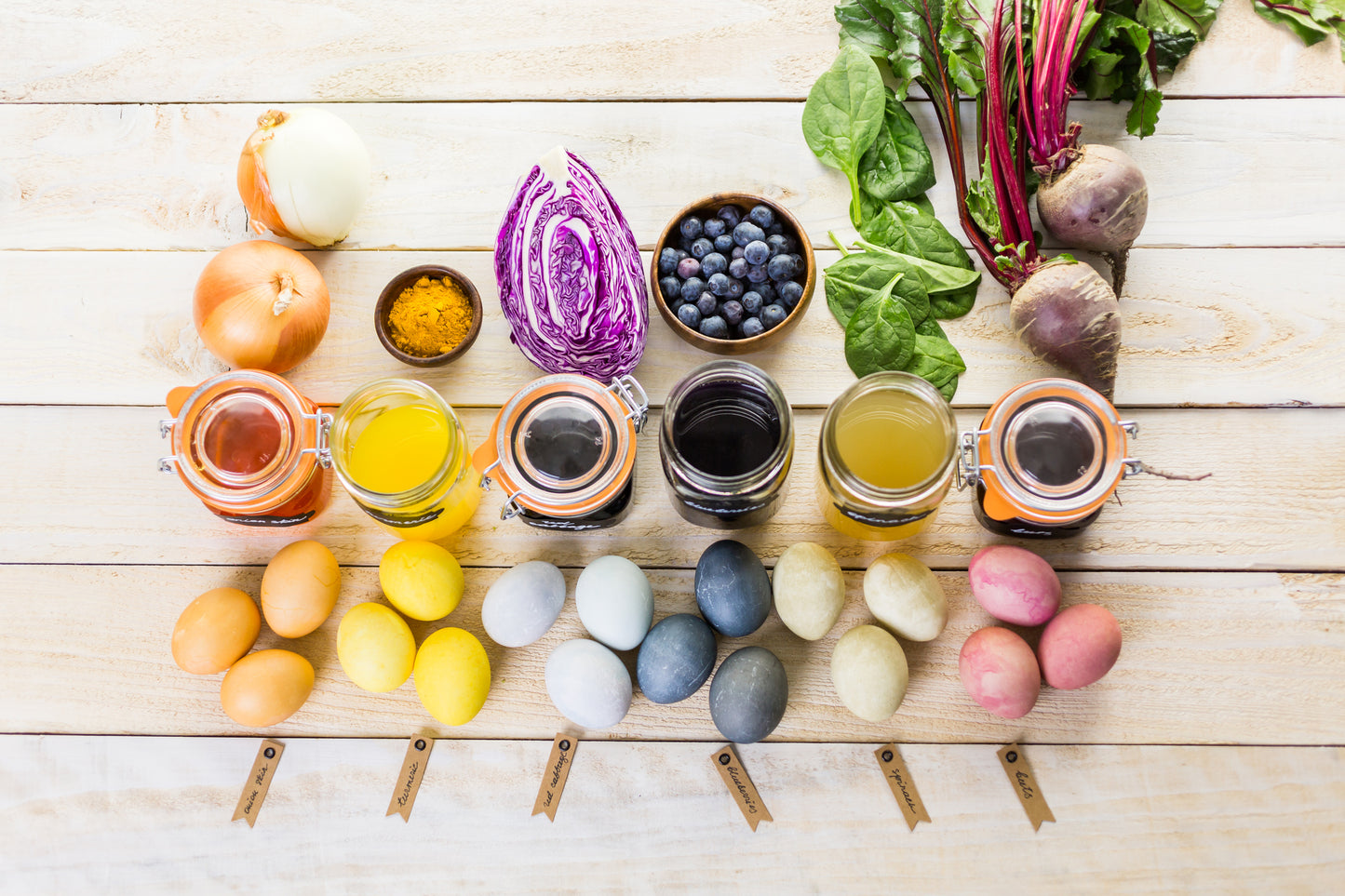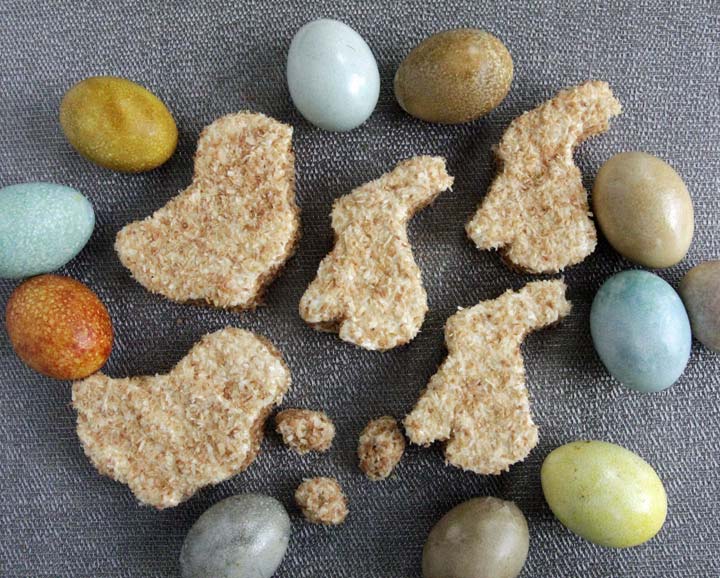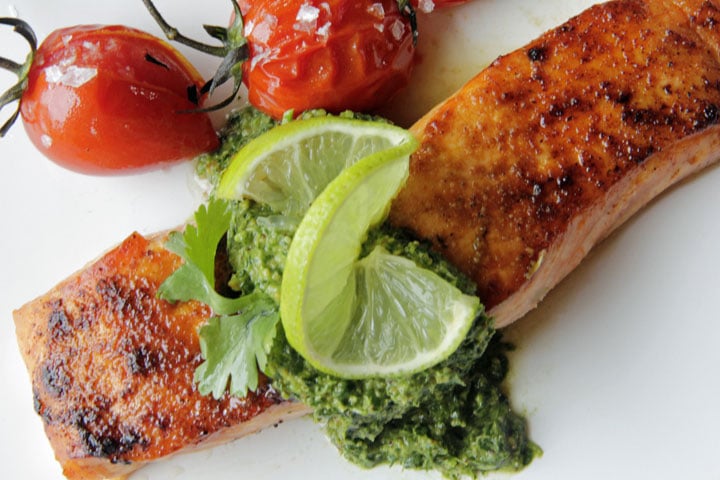
Natural Easter Egg Dyes
The following makes for a fun project for kids and helps them discover natural color in foods. It’s near impossible for me to tell you exactly how long it’s going to take you to dye Easter eggs using these natural dyes. It depends on how many colors you want to create, how many eggs you want to dye, and of course, how many children are involved in the process. But what I can tell you is that it is an incredibly fun project.
It’s like creating a chemistry lab in your kitchen! It’s also a great history lesson for them to experience how natural dyes were a part of everyone’s lives in the past, not just to dye eggs, but all hand-woven fabrics and yarns. This is also a lesson in patience. The colors will be more intense if the eggs are left in the dyes (refrigerated, of course) for 24 hours.
Ingredients for Colors

- Pink-- cranberry juice
- Reddish Pink-- beets
- Golden Orange-- safflowers
- Rich Amber-- brown onion skins
- Golden Yellow-- turmeric
- Natural Green-- spinach
- Various shades of Blue and Teal-- purple cabbage with ½ teaspoon or more baking soda (no vinegar), shade will depend on the amount of baking soda used.
- Purple-- purple cabbage
- Brownish Burgundy-- black cherry juice
- Brown-- black tea
- Dark Rich Brown-- dark coffee (I used expresso)
- Hard-boil the eggs first. You can put warm, just cooked eggs into warm or cool dyes, but if you make the eggs the day before and refrigerate them, let the dyes cool before submerging the eggs. Don’t put cold hard-boiled eggs in to a warm/hot dye bath.
- After hard-boiling, wash the eggs with clear water and gently rub them to dry and to remove any residue. Some companies coat the eggs with mineral oil after they sterilize them. If you get fresh eggs from the farm, they still might have the chicken’s natural protective coating on them called the bloom or cuticle.
- To make the dyes that use vegetables or vegetable skins, i.e. beets, purple cabbage, onionskins or spinach, use 1 to 2 cups of the ingredient in about 2 cups of water. Bring to a boil and simmer for 30 to 60 minutes to reduce the liquid. Using more of the ingredient adds a deeper pigment.
- To make dyes from coffee or tea, boil several tablespoons ground coffee or 3 to 6 tea bags in about 2 cups of water. Bring to a boil and simmer for 30 to 60 minutes to reduce the liquid. Using more of the ingredient adds a deeper pigment.
- To make dyes from spices or dried flowers, i.e. turmeric or safflowers, boil several tablespoons in about 2 cups of water. Bring to a boil and simmer for 30 to 60 minutes to reduce the liquid. Using more of the ingredient adds a deeper pigment.
- To make dyes from premade juices, i.e. cranberry, black cherry, etc., just use the juice.
- With the exception of creating blue dye from cabbage, add about 2 tablespoons white vinegar to the dye bath before adding egg(s). The vinegar helps the dye penetrate the eggshell. However, the vinegar tends to cause more speckles on the egg. Experiment with and without to see which results you prefer.
- Making blue dye requires using purple cabbage juice and adding ½ teaspoon or more baking soda to the juice. The alkaline quality of baking soda reacts with the acidic cabbage juice and turns purple cabbage juice blue. Do NOT use vinegar in the blue dye. It will change it back to purple!
- Mason jars with lids make great containers because you can put the egg(s) in the dye bath, screw on the top, and refrigerate the jar. Also makes for fewer spills!
- IF YOU ARE PLANNING TO EAT THE EGGS, STORE THEM IN THE REFRIGERATOR WHILE THEY ARE IN THE DYE BATH. Hard-boiled eggs are perishable and must be refrigerated.
- After you remove the eggs from the dye they will be matte. If you want shiny eggs, put a little olive or coconut oil on a paper towel and very gently rub the egg on the cloth.

Farm fresh eggs with their all natural "dye" look. A few more tips: There is no exact amount of each of the above ingredients to use. I usually put a couple of handfuls of each of the bigger items. When using spices, I just use a few tablespoons. What it comes down to is a basic boiling operation and your preference. In my house, we bring to a boil the water and our fave dye product, then reduce heat to low and let simmer anywhere from 30 minutes to 1 hour or longer, until we like the color we see in the water.
Get the water to a color/shade you like and try it out. Pour liquid through a coffee filter or you can use a mesh strainer, and into a bowl or jar that will be deep enough to put your eggs in. I love using Mason jars. Don't forget the vinegar, this is to help the dye absorb into the eggshell and is important. Some people even add another tablespoon to the 'dye' before they put the eggs in. Use a slotted spoon (or tongs) to put the eggs into the liquid.
P.S. Take a trip to the grocery store before you get started and let your imagination run wild. You can experiment with many other ingredients to create colors. You might try carrot juice, orange or lemon peels, granny Smith or yellow delicious apple peels, green tea, rose blossoms, violet blossoms, grape juice, red onion skins, chili powder, paprika, pomegranate juice, raspberry juice, a variety of flower petals … there’s an endless (bunny) trail of ingredients to try







